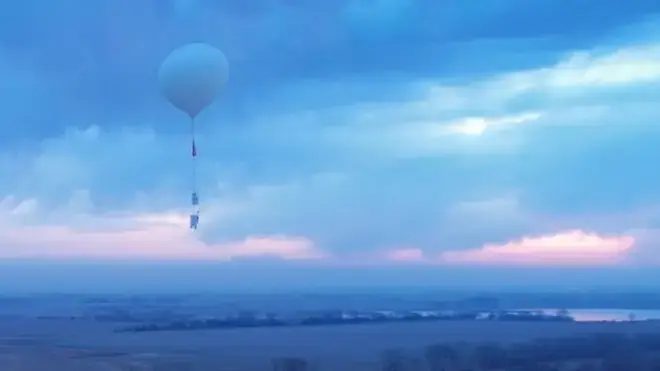Silently cruising at altitudes where the sky darkens to black, a new fleet of British 'spy balloons' has successfully completed top-secret trials, heralding a new era of surveillance for the UK's armed forces.
The Ministry of Defence has confirmed that these high-altitude platforms are being developed to provide intelligence and reconnaissance from the stratosphere.
Flying between 60,000 and 80,000 feet—twice the height of a commercial jet—the uncrewed balloons operated as a coordinated "constellation" over the United States.
In a landmark achievement for the "Project AETHER" initiative, they provided nearly a month of unbroken surveillance coverage, proving they can outlast traditional aircraft by weeks.
This game-changing technology offers a persistent, low-cost eye-in-the-sky, capable of monitoring adversaries or supporting military operations on the ground.
The balloons can be operated by a single person and carry sophisticated sensor payloads weighing up to 3kg, with some modules being as light as a European robin.
The future use of such balloons could include support to operations and reliable communication and fast internet connection to disaster zones or remote areas with no coverage, while also providing information for weather forecasting and climate research.
"This innovation is about giving our Armed Forces the edge – better awareness, better communications, and lower maintenance needs," declared The Rt Hon Maria Eagle MP, Minister for Defence Procurement and Industry.
"Stratospheric technology like this could transform how we operate in complex environments, keeping our people safer and better informed than ever before. This successful trial is another example of UK defence pushing boundaries."
While their primary purpose is military intelligence, these stratospheric platforms have the potential to do much more. Officials suggest they could one day be used to provide emergency, high-speed internet to disaster zones, assist with weather forecasting, or conduct climate research.
The trials, which took place in South Dakota, were a collaborative effort led by UK firm Voltitude, with support from Landguard Systems (UK) and Aerostar (US), and managed by the MoD's procurement arm, Defence Equipment & Support (DE&S).
"These latest trials have been incredibly fruitful and pave the way for more collaborative working with our allies to develop capabilities that will benefit our Armed Forces," said James Gavin, Head of the UK Defence Innovation team.
The Ministry of Defence is already looking to the future, exploring concepts for even more advanced balloons capable of carrying heavier payloads on missions lasting from six months to an entire year.
The ‘comical pettiness’ of North Korea sending rubbish-filled balloons to the South
Military balloons were thrust back into the spotlight in 2023 after a suspected Chinese spy balloon drifted across the United States and Canada for seven days.
The incident concluded when a US F-22 Raptor downed the craft with a missile. While officials in Beijing protested, calling it a civilian weather balloon and accusing the US of an overreaction, Washington is pursuing its own balloon projects.
The US has invested $3.8 million in this area between 2020 and 2022, with the belief that balloons could be used to counter hypersonic weapons from China and Russia.
Meanwhile, the Korean peninsula has seen a different kind of balloon-based exchange: North Korea sent balloons filled with trash and manure southward last year, and South Korea has previously sent USB sticks loaded with K-pop in the opposite direction.

